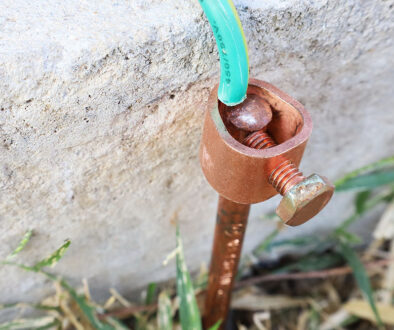These Common Grounding Mistakes Can Ruin Your Project
Taking the time to properly ground electrical equipment during your construction project can feel like a hassle. Over time, more requirements and guidelines have increased the amount of time and money the process takes. Close attention is necessary to prepare things before continuing with the build.
But, these extra steps are not just “best practices.” They are important safety measures that can protect you, your crew, and your end customer from electrical shock and related risks. Even from a budget and time perspective, you will cause costly delays if your project does not meet safety requirements.
With that in mind, there’s a few common grounding mistakes that can ruin your project, putting people at risk and causing delays.
Not Attaching (or Reattaching) The Grounding System
One of the most basic but common grounding mistakes is not properly attaching electrical devices to the grounding system. Another is failing to reattach the system components after rearranging things. Improper connections between devices and grounding rods or wires can happen when the devices are improperly wired. Loose wiring can disconnect under light tension and leave a live wire exposed and ungrounded.
Another risk is improperly reattaching the metal raceway after a project has shifted when one is being used as a main conductor for the grounding system. Common ways this can happen is if the raceway becomes unsecured and falls, or if it’s bent and pulled out of place. This can leave the grounding wires attached to the metal raceway improperly connected. This sacrifices the integrity of the whole grounding system.
Failing to Properly Attach Appliances and Outlets
Another common grounding mistake is improperly connecting basic electronics, like kitchen appliances, outlets, or washers and dryers. Current code requirements call for the grounding of the metal frames of these appliances. This happens by adding another grounding wire, called the equipment-grounding conductor. This is a common mistake, because some contractors are not aware of the updates to the code. Improperly grounded appliances and outlets are a major shock hazard and can easily cause an electrical fire in your home.
Only Installing a Single Grounding Rod, Instead of Two or Three
Another common grounding mistake is only installing a single grounding rod when a project requires two or more. The NEC allows for 25 ohms ground resistance or less to be present. But if more than that exists on site, additional grounding rods are necessary.
Now, most projects use two grounding rods from the beginning. Then, if the initial ground resistance measurement is too high, a third rod can be installed. But, too often the assumption after the first measurement is that adding one more rod will fix the problem. This can lead to many job sites that still need additional grounding rods. The only way to know for sure is to measure the ground resistance again after each new rod is installed. Unfortunately, this is not a common practice on job and construction sites.
Improper Grounding and Handling of Water Sources
There are two common grounding mistakes when it comes to water. The first is failing to bond equipment ground to a water pipe. The second is improperly grounding a submersible well pump.
Many assume that equipment wired around a grounded water pipe is sufficiently grounded, but that is incorrect! Each device needs to be individually bonded, even if you are using the water pipe as the point for grounding. When grounding by bonding equipment to a water pipe, there are specific requirements about where on the pipe materials can be bonded. As bonding around water sources is a very specific process, you will want to study the NEC requirements carefully before moving forward with the project.
The other water-related grounding mistake is in regard to submersible well pumps. In the past, these well pumps were thought to remain underground. But as it became clear the common practice was to dig up the pumps to test them, it was necessary to add an additional equipment-grounding conductor wire to the pumps. This prevents the pumps from becoming a shock hazard, even when being exposed for testing.
Avoid Common Grounding Mistakes by Working with the Experts!
These are just a few of the many common grounding mistakes made on construction sites. While they may seem minor, they can have major consequences. From electrical fires to shock hazards, it is important to take the time to do things correctly from the beginning. This will save you time and money in the long run, and keep everyone safe.
Of course, one of the biggest mistakes you can make when building out the grounding system for your project is using the wrong materials. That is why working with our team at Southern Grounding Products is the best way to ensure your project is safe and up to code. With decades of experience working with crews across industries, our team has the expertise to help you order exactly what you need for your project, and avoid wasting money on the wrong materials.
Contact us today to get started using the form on website and someone from our team will be in touch with you soon.




